Office Hours Recording: Ch 2, 10, & 12
posted: February 13, 2024
In this Office Hours webinar, we were joined by Daryl Salm of Monterey Pacific to go over three SIP Certified Standards chapters:
- Ch. 2: Vineyard Acquisition, Establishment and Management
- Ch. 10: Fruit Quality
- Ch. 12: Continuing Education
Summary & Resources
Introduction
Chapter 2
* Requirements
- * 2.1.1: You must document the soil series, permeability (Ksat), drainage class, runoff, and T Erosion Factor of your soils by contacting your local USDA Natural Resource Conservation Service office or using the USDA Web Soil Survey (https://casoilresource.lawr.ucdavis.edu/gmap/).
- Follow the link, find your property, and upload the generated PDF.
- 2.1.5: If soil test results revealed conditions that would limit vine growth, did you:
Map those areas.
Design and implement corrective action(s).
(Not applicable if tested soil conditions do not limit vine growth.)
- Can base of USDA soil map.
- Back-ho pit every 2-acres.
- Hire firm to do electrical conductivity testing.
- 2.1.11: Prior to planting or purchasing the property, did you check with the Regional Water Quality Control Board for any 303(d) listed impaired water bodies located in or around the vineyard?
- Find your local Regional Water Quality Control Board here.
- 2.3.2: Did you choose spacing based on soil type, rootstock, terrain, variety, and clone?
- No right/wrong answer, just need to show that thought was put into it.
- 2.3.3: Was your trellis and training system designed to optimize canopy microclimate and sunlight exposure, and minimize disease and insect pressure?
- No right/wrong answer, just need to show that thought was put into it.
- * 2.5.1: You must provide tissue samples based on management zones from within the last 12 months.
- Management zones can be based on fertilization. If fertilization is standardized, less samples may be necessary.
- 2.5.2: If your vines exhibit nutritional problems, have you correlated them with your tissue tests and taken corrective action?
- Can be difficult to pin nutritional issues to a tissue test.
- Corrective action can be fertilizer application.
- 2.5.3: If you answered yes to 2.5.2, did you resample tissue after taking corrective action for nutritional problems?
- Can be difficult to see response with tissue tests, but resampling does achieve the points.
- *2.6.1: You must base annual nutrient applications on the vineyard’s nutrient application plan including nutrient content from soil, water, and tissue samples and timing to optimize utilization.
- Can be difficult to know mineralization, but is important to do the samples, know these parameters, and build a budget.
- Nutrient Budget Calculator is available.
- *2.6.2: You must annually add organic matter to the soil [...]. Organic matter must be managed in such a way to prevent the introduction of unwanted pests, pathogens, and weed species as well as to prevent nutrient leaching.
- Organic matter doesn't have to be compost - mulching and cover crop counts here.
- 2.6.3: If you are utilizing winery pomace, are you using effective composting techniques such as the National Organic Program compost standards to prevent the introduction of excess nutrients, pests and diseases?; & 2.6.4: Do you utilize any properly composted local green waste and incorporate it into your vineyard operation (i.e., municipal green waste or other crop or food processing residues)?
- Talk to the manufacturer - they can tell you the temperature they bring this up to.
Ch. 10
* Requirements
- *10.1.1: You must record fruit quality parameters on an annual basis, including Brix, pH, and TA.
- You need at least one sample each vintage that includes all three of these parameters.
- Testing may be done by an outside organization (winery, testing facility, etc.)
- Baker Wine & Grape Analysis offers 10% discount to SIP Certified vineyards.
- 10.1.3: Did a vineyard, winery, and/or buyer representative visit the vineyard pre-harvest?
- A visit only needs to occur one time per-harvest to get these points.
- 10.1.13: Do you have a procedure to monitor smoke impact in the event of wildfires?
- Easy points to grab - write up a plan, even if it hasn't been an issue.
Ch. 12
* Requirements
- *12.1.1: Your organizational representatives must participate in at least 20 hours (40 hours if certifying both vineyard and winery) of continuing education pertaining to farming, winemaking, business practices and/or sustainability issues each year.
- These hours are accumulative throughout your organization.
- These don't need to be CCA or DPR approved hours.
- Vineyard Team Continuing Education opportunities:
- *12.1.2: You must have a procedure in place to maintain your certification including personnel responsible for certification compliance, contact information, database login information, documentation maintenance and deadlines.
- Contact us if you need to add or remove users to your account.
We're here to help!
We are here to help answer your questions and get the resources you need to achieve SIP Certified. Please be sure to name a Standard by number (e.g. 5.4.1) when you reach out.
Sign up for the next Office Hours...
... on March 12 from 11:00 am to 11:30 am PST where staff will be joined by Bart Haycraft of Jackson Family Wines to review Chapter 1: Conservation & Enhancement of Biological Diversity and Chapter 7: Pollution & Waste.
Click here to register!

